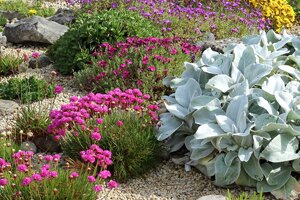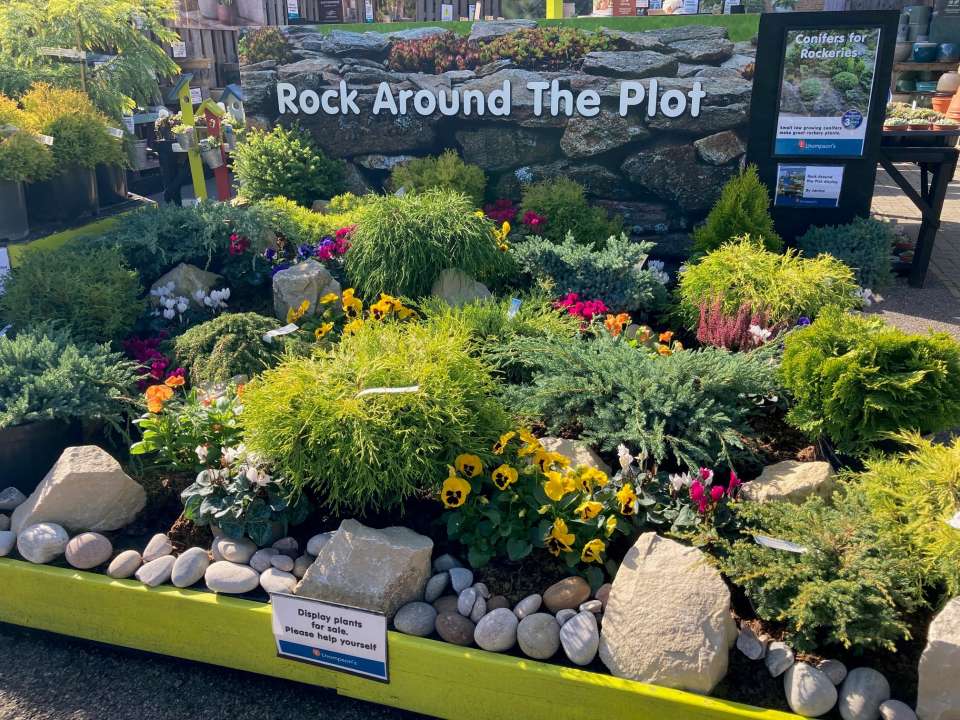How to Create a Rockery Garden

Bring Texture, Colour & Year-Round Interest to Your Outdoor Space
Rockeries, also known as rock gardens, are a timeless garden feature that brings structure, visual interest, and a touch of rugged beauty to any outdoor space. Combining rocks, gravel, and low-maintenance plants, rockeries are perfect for UK gardeners looking to add variety to their landscapes — especially on sloped or awkward terrain.
Whether you're starting from scratch or revamping a tired corner, this guide will walk you through the benefits, popular plants, steps to get started, and top tips for creating a thriving rockery garden in the UK.
Why Choose a Rockery Garden?
-
Low Maintenance: Rockeries typically use drought-tolerant plants, meaning less watering and upkeep.
-
Great for Poor Soil: Alpine and rock plants prefer free-draining soil and thrive where other plants may struggle.
-
Wildlife Friendly: Many rockery plants attract bees, butterflies, and other pollinators.
-
Ideal for Slopes: Rockeries are perfect for uneven ground or sloped gardens that are hard to mow or maintain.
-
All-Season Appeal: With careful planting, your rockery can offer interest throughout the year with changing foliage, blooms, and textures.
Popular Plants for UK Rockery Gardens
When selecting plants, focus on compact, drought-tolerant species that thrive in well-drained soil. Here are some favourites suited to UK conditions:
Alpines & Perennials
-
Sedum (Stonecrop) – Succulent ground cover, attractive to pollinators.
-
Sempervivum (Houseleek) – Rosette-forming succulents perfect for gaps between rocks.
-
Aubrieta – Spills beautifully over rocks in spring with purple or pink flowers.
-
Saxifraga – Mossy types form tight cushions with delicate starry flowers.
-
Thyme – Low-growing, aromatic, and great for edging.
Grasses & Ferns
-
Festuca glauca (Blue Fescue) – Compact blue-grey ornamental grass.
-
Asplenium trichomanes (Maidenhair Spleenwort) – A small UK-native fern ideal for shaded rockeries.
Spring Bulbs & Accents
-
Crocus, Miniature Daffodils, and Iris reticulata add early-season pops of colour.
Choose a mixture of evergreen and deciduous plants for year-round structure and seasonal variety.
How to Get Started: Step-by-Step Guide
1. Choose the Right Location
Select a sunny, well-drained area. South- or west-facing slopes are ideal, but a level space can work just as well. Avoid waterlogged or shaded spots unless using shade-loving plants like ferns.
2. Plan Your Layout
Sketch your rockery design on paper. Consider:
-
Height variation (mounds or tiers)
-
Stone placement (large rocks as anchors, smaller ones for contrast)
-
Paths or access points
-
Plant groupings (tallest at the back or centre, trailing at edges)
3. Prepare the Ground
-
Clear existing vegetation thoroughly.
-
Add a weed membrane (optional but helpful).
-
Create mounds or terraces using subsoil or rubble topped with free-draining soil or compost mixed with sand and grit (50/50 mix works well).
-
Ensure good drainage — vital for alpine and Mediterranean plants.
4. Position Your Rocks
-
Use a mix of large and small stones.
-
Bury around one-third of each large rock to give a natural, weathered appearance.
-
Arrange stones in a way that mimics natural outcrops — avoid symmetry.
5. Add Soil and Planting Pockets
-
Fill around the stones with gritty soil.
-
Create small planting pockets among the rocks and arrange plants according to size and spread.
-
Group plants in threes or fives for impact and cohesion.
6. Plant and Water
-
Gently firm plants into position.
-
Water well after planting to help settle roots.
-
Top-dress with fine gravel or grit to retain moisture and prevent weeds.
Top Tips for a Successful Rockery Garden
Sun Matters: Most rockery plants love full sun. If your spot is shady, choose suitable ferns, mosses, and woodland alpines.
Drainage is Key: Alpine plants hate soggy roots. If your soil is clay-heavy, improve it with grit or consider building a raised rockery.
Use Local Stone: To keep your rockery looking natural, try to use stone that’s native to your area (e.g., Cotswold limestone, slate in Wales, granite in Cornwall).
Plant in Spring or Autumn: These seasons offer cooler temperatures and more consistent rainfall, helping young plants establish quickly.
Encourage Wildlife: Add bee-friendly plants like thyme or sedum, and place a small pile of rocks or wood nearby for sheltering insects.
Keep it Tidy: Remove fallen leaves in autumn, as they can rot and smother low-growing plants. Cut back dead stems in spring to make room for new growth.
Think in Layers: Combine ground covers, small shrubs, and grasses to create depth and visual flow.
Final Thoughts
A well-designed rockery garden is not only a beautiful focal point but also a practical, sustainable addition to your outdoor space. With the right plants, thoughtful layout, and a bit of preparation, even a small corner of your garden can be transformed into a thriving miniature landscape.
Whether you're embracing a full alpine look or mixing rockery elements into existing beds and borders, this low-maintenance garden style is both rewarding and achievable — even for beginners.
So, roll up your sleeves, gather some stone, and start building your slice of natural beauty.

